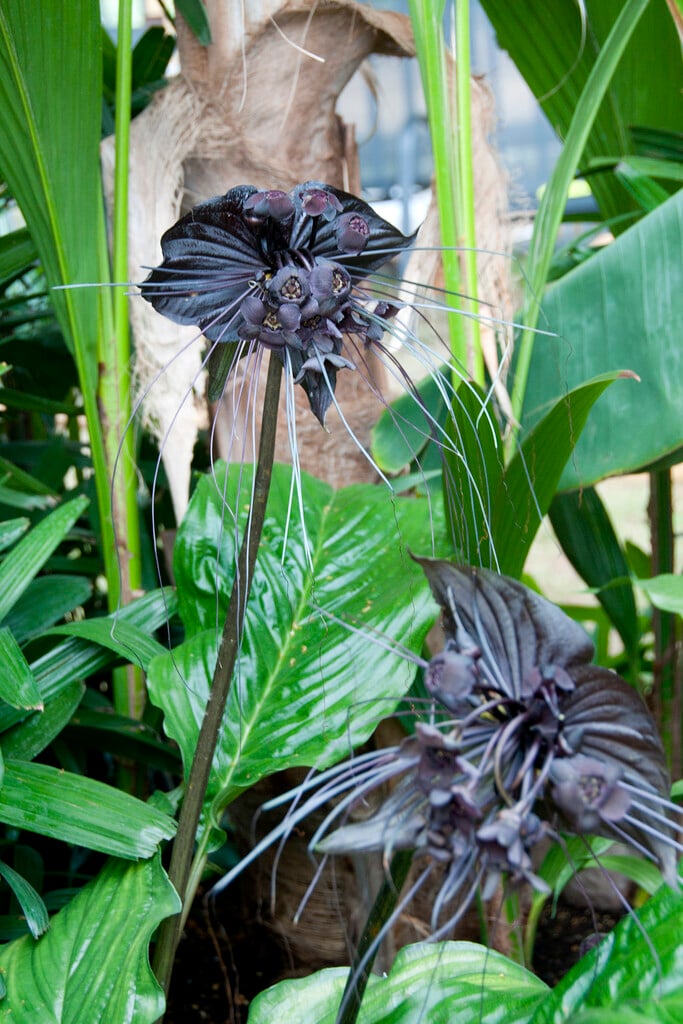Tacca chantrieri
cat's whiskers
An erect, rhizomatous herbaceous perennial up to 1m high, with oblong or lance-shaped leaves, 17-55cm long, dark green above and paler beneath, and leafless flowerstalks up to 65cm high topped by green, brown or black bracts surrounding umbels of flowers which have five green petals and dark green, maroon or black thread-like appendages, 25cm long, in summer
Size
Ultimate height
0.5–1 metresTime to ultimate height
2–5 yearsUltimate spread
0.5–1 metresGrowing conditions
Moisture
Moist but well–drainedpH
AcidColour & scent
| Stem | Flower | Foliage | Fruit | |
| Spring | Green | |||
|---|---|---|---|---|
| Summer | Green | |||
| Autumn | Green | |||
| Winter | Green |
Position
- Partial shade
Aspect
South–facing or East–facing or West–facing
Exposure
Sheltered Hardiness
H1BBotanical details
- Family
- Taccaceae
- Native to GB / Ireland
- No
- Foliage
- Evergreen
- Habit
- Clump forming
- Genus
Tacca are a genus of flowering plants native to tropical regions such as South America, South East Asia, Africa and Australia. Also known as the 'Bat' plant, because the flowers look similar to a bat in flight, they have lush, green foliage and dark purple to black flowers with whiskery brachts
- Name status
Correct
- Plant range
- Thailand
How to grow
Cultivation
In cooler climates, grow in a warm greenhouse (minimum 13ºC) in a mix of equal parts leaf mould and coarse bark, with added slow-release fertilizer, in bright filtered light, water freely all year, and in summer apply a half-strength foliar fertilizer every month, and mist the leaves regularly; pot on every two or three years, removing old, decaying rhizomes; in warmer climates, grow outdoors in fertile, leafy, acidic, moist but well-drained soil in partial shade
Propagation
Propagate by seed, sown on the surface at 22-27ºC in spring; by division in spring; or by root cuttings of transverse sections of rhizomes with at least one bud, in spring
Suggested planting locations and garden types
- Patio and container plants
Pruning
No pruning required
Pests
May be susceptible to glasshouse red spider mite and tarsonemid mites
Diseases
May be affected by grey mould (Botrytis)
Get involved
The Royal Horticultural Society is the UK’s leading gardening charity. We aim to enrich everyone’s life through plants, and make the UK a greener and more beautiful place.
